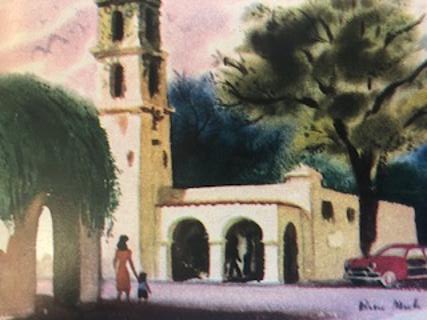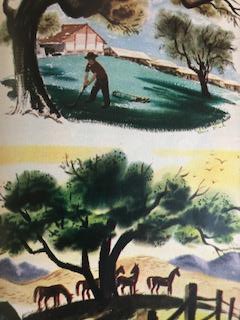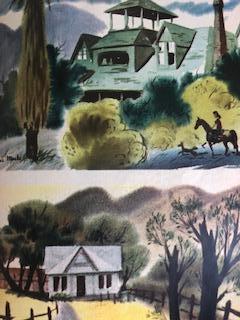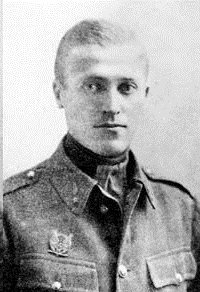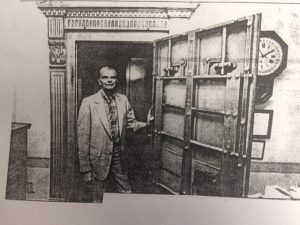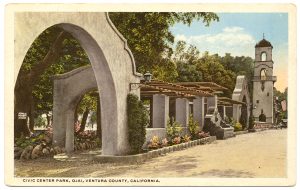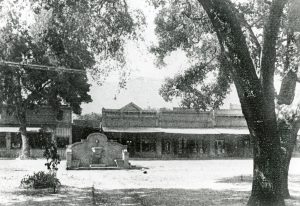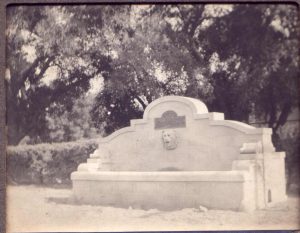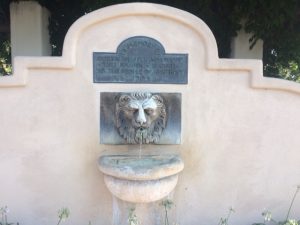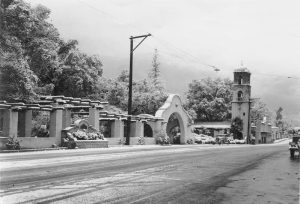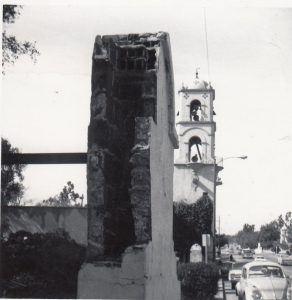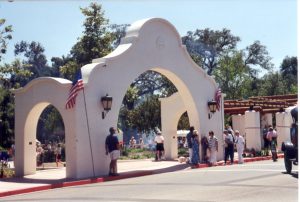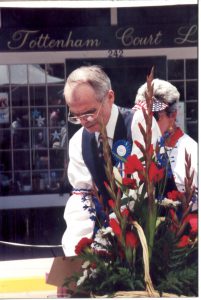The following article was first run in the FRIDAY, NOVEMBER 28, 1947 edition of THE “OJAI” on PAGE TEN. THE “OJAI” is now the “OJAI VALLEY NEWS”. The article is reprinted here with their permission. The author is unknown. Photos have been added by the “Ojai Valley Museum”.
Articles from the past often contain historical inaccuracies. History changes as new information is brought to light. Please read the notes from a local historian below the article for updated information. Or better still, purchase a copy of “The Ojai Valley: An Illustrated History” 3rd edition.
MEANING OF ‘OJAI’ IN DOUBT
BUT INDIANS HAD NAME FOR IT
__________
“A-hawai,”[1] was how the early Indians of the Ojai Valley pronounced what we now call “Ojai,” and they spoke a Chumash dialect; but what it means, has long remained cause for difference. The various Indian dialects used the word with different interpretations, but for many years has been accepted to mean “nest,” (although a number of persons have claimed that “moon” is the proper interpretation.)
However, because of the area’s geographical setting, persons viewing the twin valleys from an elevation are convinced that it resembles a giant bird nest, and for this reason feel that “A-hawai” means “nest.”[2]
[3]From “A-hawai” the name was developed to “Ojay,” and then to “Ojai” when the Spanish and Americans occupied the territory. In the middle of the 19th century, California was about the most interesting place in the world, or at least the entire world wanted to know more and more about this place called California . . . GOLD, you know, interested just about everybody . . . except, probably, a man known as Charles Nordhoff, who was more occupied with the coast scenery and writing about it and the people.
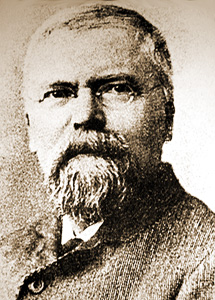
Nordhoff was a roving correspondent detailed by the New York Herald to do a few articles about this land by the Pacific shores. While roving around in the year 1872, he came across the Ojai Valley, and what he saw inspired him to write words so forcefully that two men gave a small location his name. [4]
In 1883, an R. G. Surdam purchased 1500 acres of land in the Ojai Valley near the San Antonio creek. Of this land he laid out 160 acres to be established as a townsite, offering 20 acres to anyone who would build a hotel on the property. A Mr. A. W. Blumberg accomplished this feat, and one day while the two families were discussing the townsite over a dinner table, the hotel builder suggested naming it Nordhoff, in honor of the man who wrote so enthusiastically about it. And so was it called in 1884. [5]
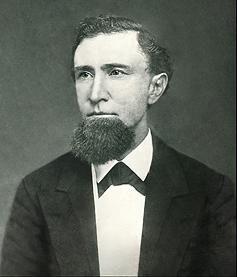
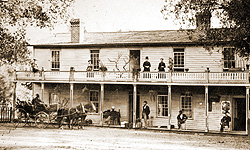
However, prior to this, in the Ventura “Signal” issue dated July 26, 1873, the first townsite in the Ojai Valley was advertised as “Ojai,” but this did not develop.[6]
And though legend has it that an unwritten law existed between the Indian tribes, in which the Valley would be utilized to discuss peace terms, and that wars would be religiously forbidden, the land was thickly populated with wild animals.
The early farmers were often troubled by the animals, and so were those who thought themselves safe behind locked doors. Thomas R. Bard, who was sent here to look after the interests of Thomas Scott, assistant Secretary of War under Abraham Lincoln, is reputed to have killed a bear in his bedroom in 1870. One year later, so say the history books, three boys lassoed a bear and brought it home to their astonished parents.
The town of Nordhoff was growing quite rapidly, and on October 27, 1891, the first issue of The Ojai was published at the Ojai library.
Just when the name of Nordhoff was changed to Ojai is somewhat confusing. One bit of reference claims “Ojai” was officially adopted in 1916, however, some records show that in 1917 a Henry Morse, then manager of the Foothills hotel, first petitioned to have the name changed. According to the newspaper masthead of The Ojai, the change from Nordhoff to Ojai appears in the May 4, 1917 issue for the first time. Evidently, however, the change must have been of little importance because there wasn’t a mention of the fact in that particular issue.
Why the name was changed, is still another story. Many people claim that Charles Nordhoff, born in Germany, was a German sympathizer during World War I. [7]
Nevertheless, on July 26, 1921, the townsite became officially known as the City of Ojai on a vote to “incorporate” by the people. On this occasion, a gavel, composed of East Indian Teak (off a wrecked English ship on Santa Rosa Island) and Iron Wood (found on Santa Cruz Island), was sent with a letter to the city council by a C. W. Rasey, of Santa Barbara, who wrote: “May the sturdy strength and tenacity of the materials of which this gavel is made, prove typical of the enduring future of your picturesque and beautiful little city.”
- ‘Awha’y’ (aw-ha-ee) was the name of a Chumash village in the Upper Ojai.
- Research and linguistic analysis has shown that ‘Awha’y means moon, probably in the cyclical sense.
- With the Spanish, the Chumash name ‘Awah’y became “Ojay.” Later, with the American settlers, the Spanish name was written “Ojai.”
- Charles Nordhoff visit the Ojai Valley in 1872, nor did his 1873 book, California for Health, Pleasure, and Residence, mention it. Nordhoff visited Ojai on a later trip to California, in 1881, and wrote about the Ojai Valley in the book’s second edition, published in 1882.
- Surdam laid out what is now the town of Ojai in 1874. Credit for naming the town “Nordhoff” is given to Blumberg’s wife, Catherine.
- The first proposed town was to be located east of what is now Gridley Road, on the ranch of Lorenzo Dow Roberts. Surdam beat him to it by platting the town of Nordhoff in a wooded area of the valley called “White Oak Flats.”
- There is no evidence that Charles Nordhoff was a German sympathizer. There was some antipathy toward German names during the time of World War I, but more likely Mr. Libbey suggested it because the name was more suitable after the Spanish makeover of the town in 1916-17.

